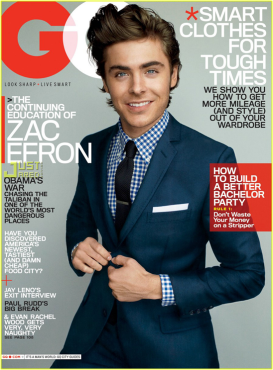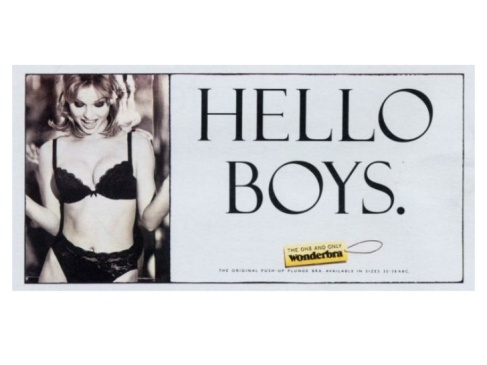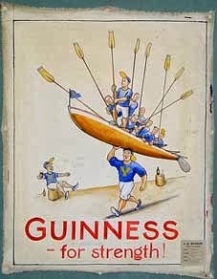For generations it has proven difficult to open up a magazine and not be greeted by gender stereotypes. Femininity, like masculinity is a cultural ideal not a biological one. Therefore, the stereotypes differ from culture to culture. But most importantly, it is the culture itself that creates and reinforces these stereotypes.
Femininity has been narrowly represented in past generations. Women have often linked to domestic situations i.e. the housework. Or on the other hand, they have been represented as sexual objects. These desired stereotypes have been designed to appeal to a certain audience, for the benefits of consumerism. As evidence in WW2 when women’s sexuality was used to recruit men to sign up to become a solider. I believe that is all the evidence we need when discussing the impact media advertising has, as it worked!
The image created for woman within the media has usually been, young, slim, white and ideally beautiful. The images below I have chosen as they allow me to demonstrate the popular creation of women as sexualised beings. The girls are both shown to be wearing barely any clothes presenting their sun kissed white skin, and slim figure. The girls are also showing off their light hair, which coincidently matches the yellow tones in the text and clothing (or lack of) which makes the posters pleasing to the eye. Women are still being used to sell and advertise products, like they were in the 1950’s. The sexualised imagery is still objectifying women and placing them in front of a male audience. This relates to Laura Mulvey’s study on the ‘Male Gaze’. This states that women are positioned at a point in society that is from a males point of view. For example in films, women are always seen as something to look at. These pictures can be seen as an example to Mulvey’s study, as it’s the objectification of women that allows these products to sell. In this example the desired audience/ customers are stereotypically Male, reiterating the fact that women are seen as an advertisement strategy in our western society. Mulvey also claimed that women are turned into sex objects through how they are shot in the media (cinematography), demonstrated by the poses the women are positioned in below. This continues the domination males have within are society and prove that patriarchy still remains.

 Masculinity is also presented stereotypically within the media. We are used to seeing men represented traditionally as a ‘macho’ character throughout the 1970s- 80s. As they were the soul breadwinners, which allowed them to be financially independent and lead both work and pleasureful lives. However, contemporary representations have seen men getting in touch with their feminine side. Which involves them showing emotions and taking pride in their appearance. Our western society has created the ‘Metrosexual Man’. The Metrosexual man is not gay, but is often sexualised within the media, a similar process to women. If the below images are compared through their masculinity presentation, we can see how we now have a different take to what the media delivers as desirable. As when the Guinness advert was first publicised we can see the aim was to be strong and independent. The men are carrying out a demanding sport, which shows them to be active and athletic. Whereas, the comparison advert, a front page in GQ, which is a magazine that predominantly promotes this ‘new man’ figure, that Zac Efron is partaking in. The perception that this delivers is a well educated, well groomed, financially stable young man. Which is now become the ideal for a man to become, whereas it would have been criticised among the likes of the Guinness advert supporters. This new man figure pleases me as it is far away from the forced masculine identity the media is used to. This new relaxed approach is more feminine and therefore could change our perceptions of masculinity for the future.
Masculinity is also presented stereotypically within the media. We are used to seeing men represented traditionally as a ‘macho’ character throughout the 1970s- 80s. As they were the soul breadwinners, which allowed them to be financially independent and lead both work and pleasureful lives. However, contemporary representations have seen men getting in touch with their feminine side. Which involves them showing emotions and taking pride in their appearance. Our western society has created the ‘Metrosexual Man’. The Metrosexual man is not gay, but is often sexualised within the media, a similar process to women. If the below images are compared through their masculinity presentation, we can see how we now have a different take to what the media delivers as desirable. As when the Guinness advert was first publicised we can see the aim was to be strong and independent. The men are carrying out a demanding sport, which shows them to be active and athletic. Whereas, the comparison advert, a front page in GQ, which is a magazine that predominantly promotes this ‘new man’ figure, that Zac Efron is partaking in. The perception that this delivers is a well educated, well groomed, financially stable young man. Which is now become the ideal for a man to become, whereas it would have been criticised among the likes of the Guinness advert supporters. This new man figure pleases me as it is far away from the forced masculine identity the media is used to. This new relaxed approach is more feminine and therefore could change our perceptions of masculinity for the future.
 The media has therefore become a very powerful medium. With the increased obsession we have as a society on current affairs, has led to the success of a wide range of technology. Therefore, now we have access to the media on almost every device, phones, laptops, tablets, radios, television. Advertisement is everywhere, and non escapable. The media also controls how messages are transmitted to us, therefore they can manipulate and alter how we see gender stereotypes. Sometimes, we have no control at how we perceive issues, as that is the way it has been presented to us. Gender stereotypes are presented in the media for a wide range of reasons, and are continued because we consume them. Girls are obsessed by what a female celebrity wears to the BAFAS for example, whereas most men do not care what designer a male celebrity wears. This is because the media have taught us as a gender to think a certain way. We are unaware of this process, which makes me believe that the media is more powerful than we think, and could be the soul creator for gender stereotypes, outdoing the family, and education.
The media has therefore become a very powerful medium. With the increased obsession we have as a society on current affairs, has led to the success of a wide range of technology. Therefore, now we have access to the media on almost every device, phones, laptops, tablets, radios, television. Advertisement is everywhere, and non escapable. The media also controls how messages are transmitted to us, therefore they can manipulate and alter how we see gender stereotypes. Sometimes, we have no control at how we perceive issues, as that is the way it has been presented to us. Gender stereotypes are presented in the media for a wide range of reasons, and are continued because we consume them. Girls are obsessed by what a female celebrity wears to the BAFAS for example, whereas most men do not care what designer a male celebrity wears. This is because the media have taught us as a gender to think a certain way. We are unaware of this process, which makes me believe that the media is more powerful than we think, and could be the soul creator for gender stereotypes, outdoing the family, and education.
 The evidence used within my post, was taken from research from various we bites, but mainly from my own opinion. For further investigation research into Laura Mulvey, her studies are very eye opening.
The evidence used within my post, was taken from research from various we bites, but mainly from my own opinion. For further investigation research into Laura Mulvey, her studies are very eye opening.

Over the past year or so in studying gender I have become increasingly more aware to the objectification, and sexualisation of women in both media and advertising, that’s not to say I was unaware before, it was more that it was something rooted within my subconscious, it was the norm to see adverts such as the wonder bra one above, and I wouldn’t bat an eyelid. I believe that this is perhaps the most worrying thing regarding the topic of your blog, and that is that it is a problem deeply rooted in society, and that not enough people are really, truly aware of it, it seems to just be accepted.
I think the ideas you have discussed in your post are extremely interesting as they comment on controversial matters within society. I agree with your opinion on the influence of the media on how we as a society perform expected gender roles. We perform the stereotypical gender roles, which are portrayed in the media daily, yet the majority of us seem to perform these stereotypical gender roles without questioning. However I think there are many people in the media who are beginning to rebel against the norms of male and female, such as Casey Legler.